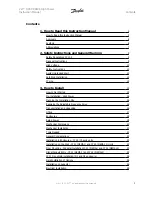
4
USE
• Check so the connected appliances don’t exceed the inverters total power.
• Make sure the battery is fully charged.
• Allow free space around the ventilation holes/cooling fan.
1. Make sure the connected appliance is switched off before connecting to the mains socket on inverter.
2. Set the on/off switch to position ”I”. Always turn on the inverter before turning on the connected appliance.
3. Power indicator diode light up when the inverter is working normally. The fan is temperature controlled and starts
only when needed. This mean the fan can be still standing and not rotate if the inverter load is small.
NOTE
• Never use longer leads than needed between inverter and connected appliance. Long cables can lead to unwanted
voltage drop and bad function.
• Switch off the inverter when it’s not in use.
Remote on/off function with Remote 2 (accessory):
To all models it’s possible to connect and use a Remote panel. For 2000W it’s Remote 2, with on/off switch and
three function/warning diodes. The remote panel are equipped with 6m cable and supports easily on/off operation if
the inverter is placed in a difficult to reach position.
Inverter use with motor, pump, freezer or refrigerator:
It’s important to use an inverter that provides an output power proportional to what is connected. A motor, pump
requires a great deal of initial power when starting up. This can be up to 3-4 times it’s current under normal operation.
In order to support this, an inverter with double or even four double power is needed.
Useful television interference help:
If a interference will occur when television appliance is connected, please check the below recommendations:
• Make sure the inverter is properly grounded.
• Don’t operate high power loads when watching television.
• Make sure the antenna provides a ”snow free” signal.
• Move the television as far away from the inverter as possible.
• Keep the cables between battery and inverter as short as possible.
• Twist the battery cables (red & black) with about 2-3 turns every 30cm/foot.
Measuring the output voltage:
The inverter produces a purse sine wave output AC voltage. This require a volt meter that can measure ”TRUE RMS”.
If the output voltage is measured with other type of meter the voltage shown might be 20-30 V less than the
actual voltage.





































